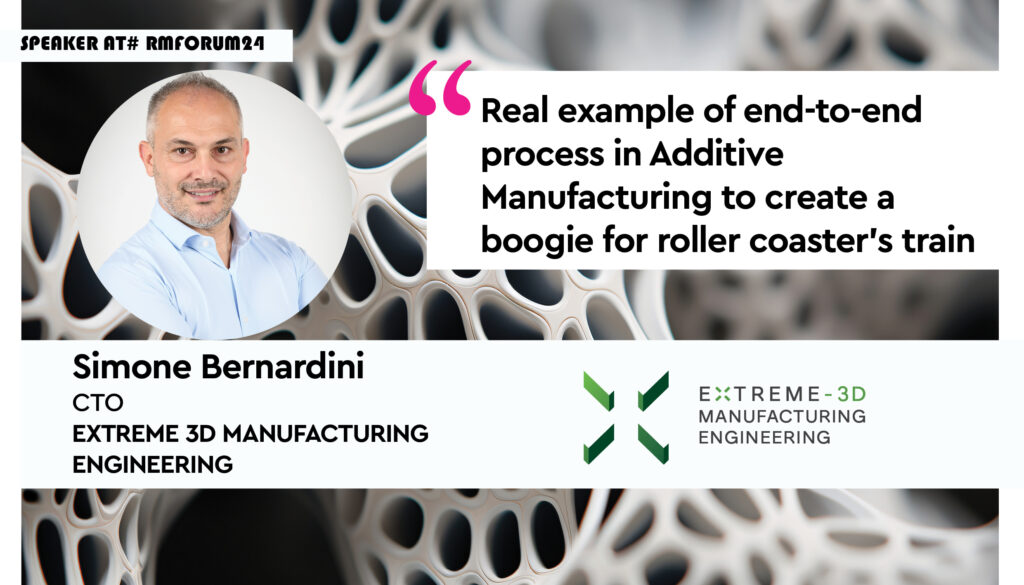
The world of amusement rides has for some time been going through a historical moment of regulation revolutions; these revolutions are leading to a sharp increase in product cost related to increasingly severe load cycles, leading to an increase in the cost of building the structures themselves.
By virtually developing an entire train for a rollercoaster track, it was shown how appropriate it might be to revise this moving part in additive manufacturing in order to reduce the masses and consequently the loads on the track.
Simulation aimed at optimisation combined with additive manufacturing of large parts and large series production made the results the key to drastically reducing the development and management costs of a project and the realisation of the train itself. With this approach, the significant reduction in the mass of the parts in the train also leads to the improvement of the equipment, resulting in energy savings in the drives and the running costs of the carousel in the park. All this is guaranteed by meeting all required safety standards.
Un esempio reale di processo end-to-end nella Produzione Additiva per creare un bilanciere porta ruote per un treno delle montagne russe
Il mondo delle giostre da tempo sta attraversando un momento storico di rivoluzioni normative; tali rivoluzioni stanno portando ad un forte aumento di costo del prodotto legato a cicli di carico sempre più severi portando ad un incremento di costo per la realizzazione delle strutture stesse.
Sviluppando virtualmente un intero treno per un percorso di una montagna russa, si è dimostrato quanto possa essere opportuno rivedere tale parte in movimento in additive manufacturing al fine di ridurre le masse e di conseguenza i carichi sul tracciato.
La simulazione mirata all’ottimizzazione combinata con la produzione additiva di particolari di grandi dimensioni e grandi produzioni di serie, ha fatto in modo che i risultati ottenuti siano la chiave per ridurre drasticamente i costi di sviluppo e gestione di un progetto e della realizzazione del treno stesso. Con questo approccio, la riduzione significativa della massa delle parti del treno, porta anche al miglioramento dell’impiantistica, con conseguente risparmio energetico negli azionamenti e dei costi di gestione della giostra nel parco. Tutto questo concetto viene garantito soddisfacendo tutti gli standard di sicurezza richiesti.
more info al link
